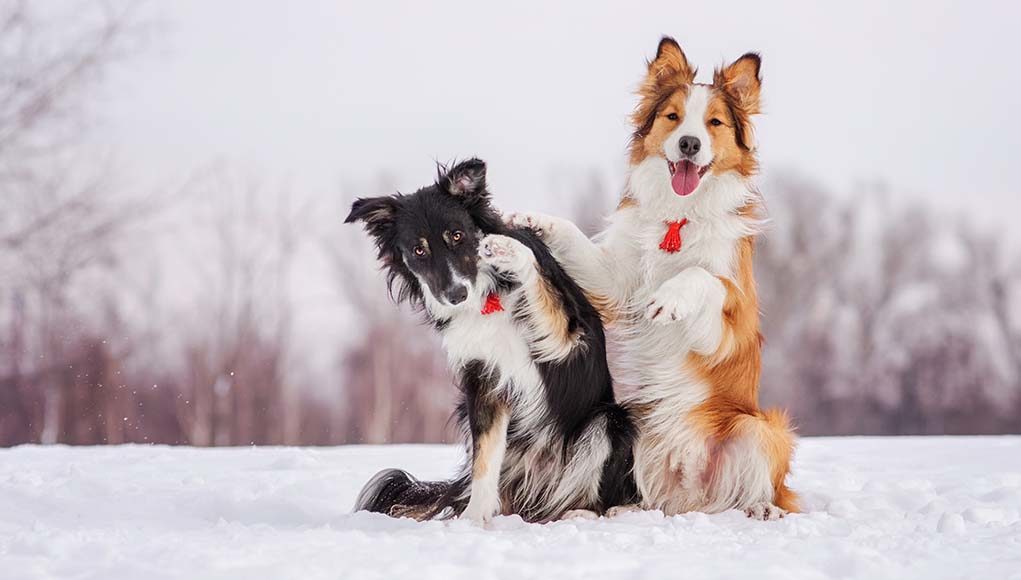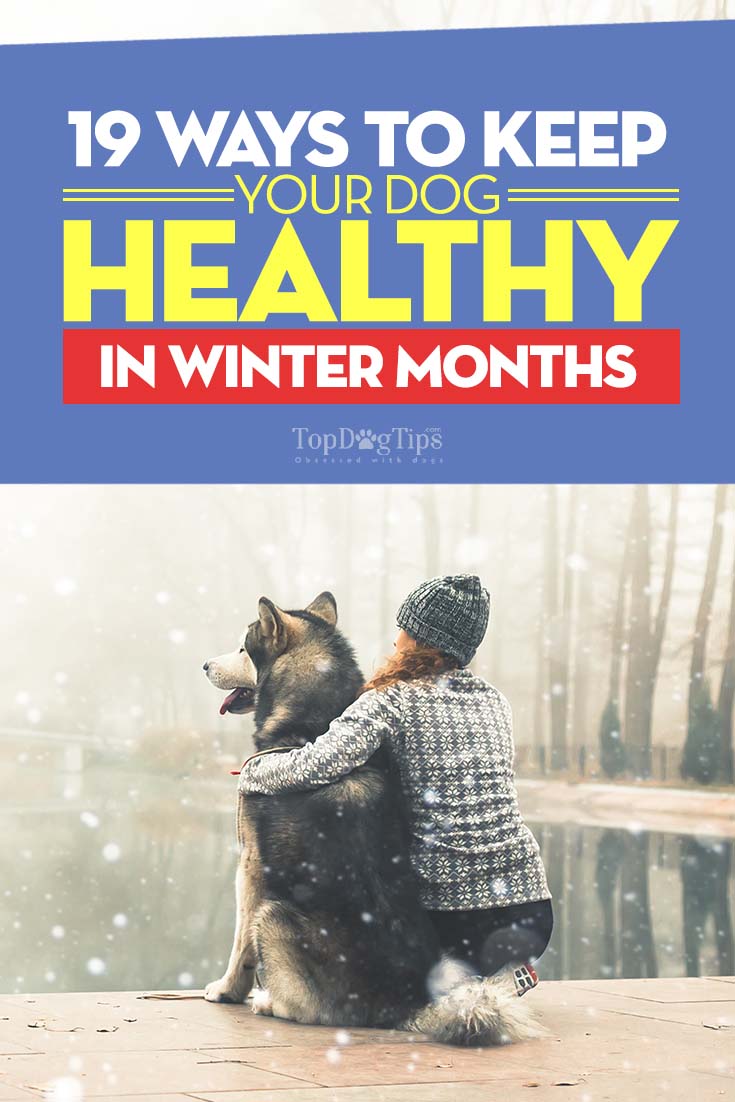Keeping dogs healthy in the winter isn't just about keeping them warm with clothing. Think about your dog's sleeping arrangements, winter allergies, adjusting dietary plan, how the dry air will affect your pet's skin and health condition like arthritis, and of course don't ignore paw protection. Here are some tips to ensure your pooch is safe.
1. Adopt a Dog That Will Do Well in Your Climate
If you're just about to adopt a dog, think about your environment beforehand. When you have your heart set on a breed that will struggle in your local area, forewarned is forearmed, just make sure you have contingency plans in place for when the weather turns, and you know your little buddy will struggle.
2. Get them a Shelter from the Weather
Most dogs like snow and to spend time in the great outdoors, even if it is only the backyard, but when the weather turns truly freezing, how are they going to cope? You don’t want your dog to be shivering next to the front door waiting to come inside, yet many breeds are persistent about staying outdoors.
Make your dog a DIY shelter, or pick up a winter dog house, or put out a foam mat and blankets under an overhang in the yard. Your dog is still going to love being outside, even when it is cold, but depending on the weather, short trips out might be the best thing.
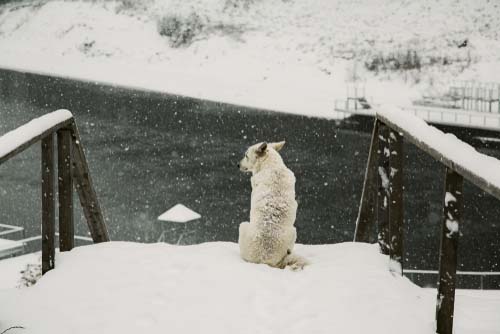
3. Know When Your Dog Is Cold
We know how to tell if we’re cold – we start shivering, wrap our clothes around us a little tighter and complain to anyone who’ll listen. But, how can you tell if your dog is cold?
The temperature is the first clue, but some breeds are tougher than others. The best way to tell is to feel the edge of your dog's ear. If their ear feels cold, it’s one of the indicators that the rest of them might be too. On short haired breeds you can sometimes tell they’re cold by feeling their body, too. Shivering is another indicator, like in people.
4. Make the Most of Good Weather When the Sun's Out
You know the saying, “make hay while the sun shines”? Get out for a walk while the sun shines instead of going too early in the morning or too late at night. Don’t ignore the windchill factor and the fact that nights are drawing in.
If you see a little ray of sunshine out there, don’t go making yourself a cup of coffee and sitting in that sunny spot in the house and pretend it’s almost summer. Instead, get your coat on and take your pup out.
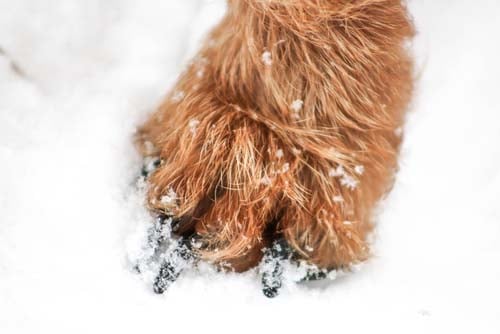
5. Make Sure the Paws are Protected and Healthy
Not only can paws develop cracks on the pads, but the chemicals used to keep the streets clear can be dangerous too. If you have a fluffy breed where the fur grows between their pads, trim it, because this hair works as a magnet for those chemicals, snow and ice.
You can massage petroleum jelly into your dog’s pads before a walk, use paw wax or dog booties. Winter boots especially are great to keep their feet protected, warm and provide the dog with a better grip as they romp around on ice and in the snow.
6. Moisturize Your Dog to Avoid Chapped Skin
Low humidity coupled with your home's heating system can wreck havoc on a dog's skin. It generally tends to get dry and itchy in winter months. You can treat this problem from the inside and out.
Starting externally: give a dog a good brushing and do so regularly. This distributes a dog’s natural oils to help moisturize their coat, and it also promotes circulation, which stimulates the production of oils.
Add olive or coconut oil to your dog’s food (and even on their fur) to get a more lustrous coat and softer skin. This is something to do every day in winter.
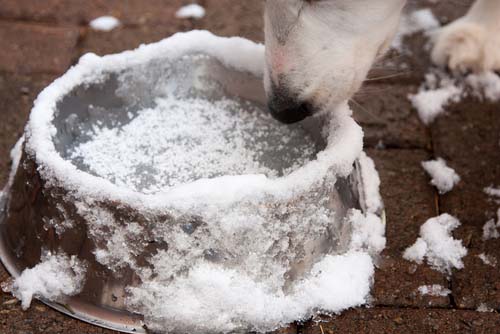
7. Keep Them Hydrated
Humidity is lower in the winter, and that may contribute to dehydration in dogs if you're not looking out. Couple that with the extra work a dog is doing to exercise and stay warm in the cold, and your pup will require an extra supply of liquids. For those staying outdoors, a heated water bowl is a great thing to have.
If your dog isn't drinking enough, tempt them: add a low sodium broth to their water, or feed them some foods like cucumbers. You can also add extra water to a dog's meal. Some dogs won't like soggy kibble, but starting with a few drops of water and gradually increasing the moisture content should work.
8. Use Dog Beds That Will Keep Your Pet Warm
Dogs sleep more in the winter. Whether you go for a fancy-schmancy dog house, or just a good old covered pallet, the important thing is that you get your dog off of the ground by 3 inches. Also, try to have three raised sides to the bed to keep out drafts and put the bed in a warm place.
If your dog feels the cold, you could also slip in a heat pack or bed warmer that you’ve heated in the microwave and wrapped securely. And don’t forget that dogs don’t just lie on sweaters these days; they wear them too.
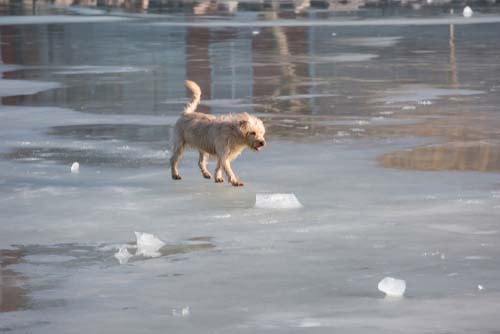
9. Watch Out for Frozen Bodies of Water
We’ve heard and read about those stories a thousand times: someone lets their dog roam free near an open expanse of frozen water, dog runs on ice, it breaks, then people have to rescue dog, and hopefully there's a good outcome.
If your walk regularly takes you near bodies of water that are liable to freeze over, unless you know for sure that it’s safe, do not let your pet go on the ice. If you do not have a complete recall down, then keep your dog on a leash at all times – this is a rule.
10. Care for an Arthritic Dog
Winter is hard on senior arthritic pets. Hopefully, you’re adding omega-3s and oil to their diet, as well as chondroitin/glucosamine supplements to help lubricate those joints that get even stiffer in the cold weather.
A warm house outdoors or a heating pad indoors helps keep the joints in better shape. Invest in a sweater or coat as well for outdoor walks. Again, dog booties are great when it’s slippery or wet for increased traction. Hydrotherapy wither underwater treadmills in pet-friendly swimming centers is also perfect for a senior dog's joints.
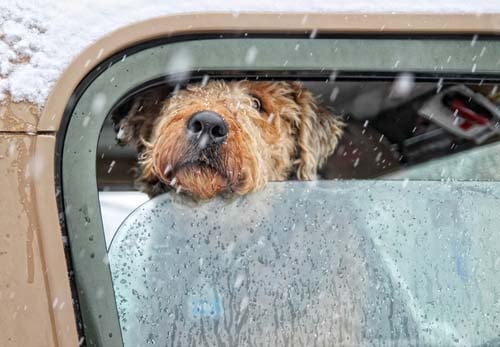
11. Don’t Leave Dogs in the Car
We all know the dangers of hot cars in the summer, but cold cars are just as dangerous. Once you’ve pulled up at your destination and turned off the heating, the car rapidly cools down, and within a short amount of time, it feels like a fridge. If left in the vehicle, a dog will start to get uncomfortable, shivering will set in, and hypothermia can follow.
12. Don’t Overfeed Your Dogs
While dogs require more calories in winter, if your pet is stuck indoors on one too many snow days, make sure to account for that calorie-wise. You can invest in a food dispenser or a puzzle feeder that is brain stimulating at the same time, where the pet only gets a treat when they figures out the problem.
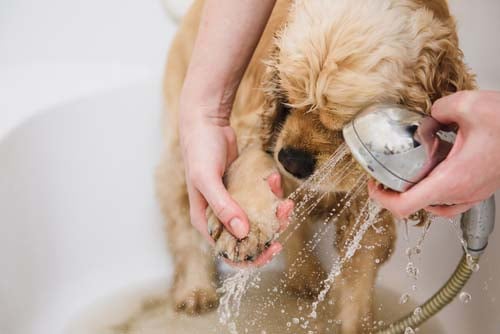
13. Wash and Dry Them Off When You Get Home
Make it a routine that when you come in from your winter walks, you take off the dog's outerwear, or give them a good rub down with their favorite doggy towel.
Clean your pup's feet as well by the door or using a paw wash, dry them off, paying particular attention to the areas between the pads where chemicals and grit can linger. Maybe put on the dog's indoor sweater, put on the kettle, make sure their water bowl is topped up, make a cup of tea and have a biscuit.
14. Don’t Trim a Dog's Fur in the Winter
Dogs do not need their fur trimming over the winter, but grooming at any time is a must. Long-haired breeds can still have the odd haircut but make sure you go for a longer trim and fill up your dog's wardrobe with weather-appropriate clothing.
Appropriate dog winter clothes don’t always have to come from a doggy boutique either. I know of one little Rottweiler who didn’t like the cold, and she was a size 7/8 in children's hoodies.
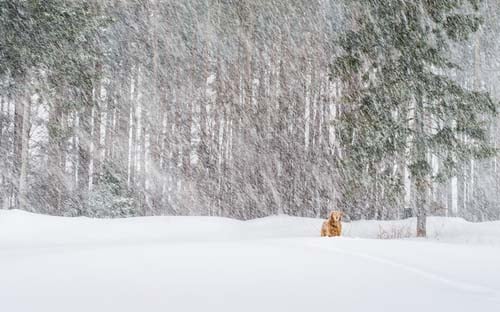
15. Remember That It’s Easier to Get Lost
You know your dog can be a bit of a goofball, and they love to charge around in the snow, but what if they charged off and in that excitement couldn’t find their way back? Dogs are the champions of the sniffer world, but the colder it is, the fewer scent markers there are to follow. Have a dog collar, ID tags and microchip ready; consider a GPS tracker as well.
16. Consider New Toys or a Treat Dispensing Device
When you’re out at work over the winter, the house gets darker for your stay at home pal, and they're probably spending time cuddled up in their bed. So how about a few new toys to keep the dog stimulated, or a treat dispensing device, like those dog cameras? They allow you to control when your pup gets a treat with an app on your Android or iPhone.
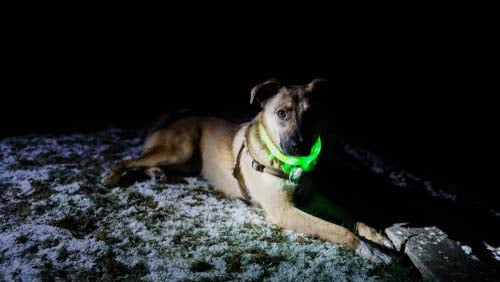
17. Use Fluorescent and Light-up Collars
Have you seen those doggy disco jackets that light up all along the side of a dog? They’re pretty cool, but you don't have to go that far to enjoy the benefit of a safely illuminated pooch. A fluorescent collar or jacket is ideal for high traffic areas, while a light-up collar in more rural areas means you know where your pet is even when visibility is low.
18. Even if Walks are Shorter, Go Out as Needed
With the days getting shorter, the cold, and the new Game of Thrones season coming out, there are lots of excuses not to take out a dog, yet even a short walk is better than no walk at all. Take your pet out for a quick walk, even if you have to force yourself.
19. Spend More Time Playing Indoors
When the weather outside is frightful, you can stay indoors and keep up with the routines. Apart from potty breaks outside, there are plenty of things you can do indoors to give a dog enough exercise and mental stimulation.
A favorite is a game of treasure hunt; not only does it work the body, but it works the mind, too. Hide something and let your dog find it. Start with hiding it in full sight, so the dog understands the game, then gradually make it more challenging.
READ NEXT: 20 Things to Keep Dogs Warm in Winter


